Crapshoot: Life and Death actually is brain surgery
We're rerunning Richard Cobbett's classic Crapshoot column, in which he rolled the dice and took a chance on obscure games—both good and bad.
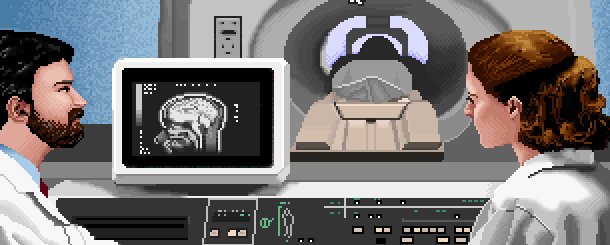
From 2010 to 2014 Richard Cobbett wrote Crapshoot, a column about bringing random obscure games back into the light. This week, he tries his hand at a little medical malpractice, where the diagnosis is usually murder. Manslaughter, anyway. Well, it's a complicated game!
Medicine. How hard can it be, anyway? I may not be some kind of fancy-schmancy 'doctor', or even have taken Biology for a single femtosecond longer than I had to back at school, but I have seen every episode of House, and most of Scrubs. With so much experience obviously having worked its way into my brain via cultural osmosis, I'm confident I can diagnose anything. You! With the sniffles! Sniffles are boring! You obviously cut yourself on a toy soldier as a child, with a little spear piece lying dormant in your finger for years, before a ride on the teacups at Alton Towers sent it careening into your lung and now it's cancer. Take two aspirin while I go over here and insult someone in a hilarious way.
There. See that, Dorothy? It's easy. Who's next for a fingering from these healing hands?
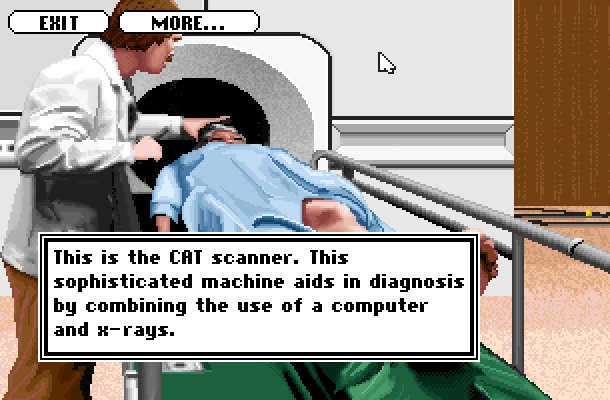
Life and Death is the original surgery simulator. It came out in 1988, focusing on the abdomen. The sequel, Life and Death II: The Brain, which we're looking at today, came out a couple of years later, starring the brain. As anyone with one probably guessed from the title. Had the series continued, I'm sure we'd have seen Life and Death: The Foot, Life and Death: Psychiatric Ward, and Life and Death: Honest, I Was Just Sitting Above It And I Slipped, in which you'd have to carefully remove vacuum cleaners and courgettes from the naughty bits of assorted embarrassed patients.
In a way, it's the medical equivalent of Police Quest. It was created by a doctor, and focuses heavily on procedure, but you probably don't want to use it as a training aid. In fact, you're ordered not to. "Nothing that appears in or on the package, manual or the software program is in any way intended to be a statement or representation of fact or of medical opinion applicable to any situation other than the playing of the computer game," it gasps when you quit, as if that would have done anything to stop the inevitable "SICK GAME TOLD MY SON TO OPEN MY CHEST WITH A FORK!" headlines.
Like most games of this era, Life and Death 2 takes the very reasonable stance that tutorials are for pussies. Your introduction to the game consists entirely of a quick description of the rooms available in the hospital, and then you're kicked out and assigned your first patient. You can go back to class and page through endless tedious nonsense about saline drips and cerebrospinal fluid, but who cares about that next to the grander concern of saving lives! I decided I'd rely on good old gut instinct, then remembered I was playing the sequel, and decided to swap that for skull instinct instead.
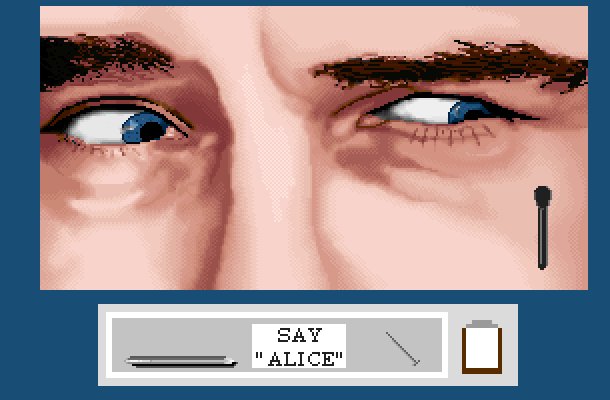
My first patient was a 22 year old man, admitted with a severe headache. For this, he'd somehow blagged himself a hospital bed? Running tests was obviously a waste of time. I gave him a pack of aspirin and sent him on his way with a warning not to waste any more of it in the future. For this, the game's head of neurology, Dr. Beardy, immediately hauled me over the coals. Apparently my diagnosis was spot-on, but I still failed because I hadn't practiced 'evidence based medicine'. Bah.
Keep up to date with the most important stories and the best deals, as picked by the PC Gamer team.
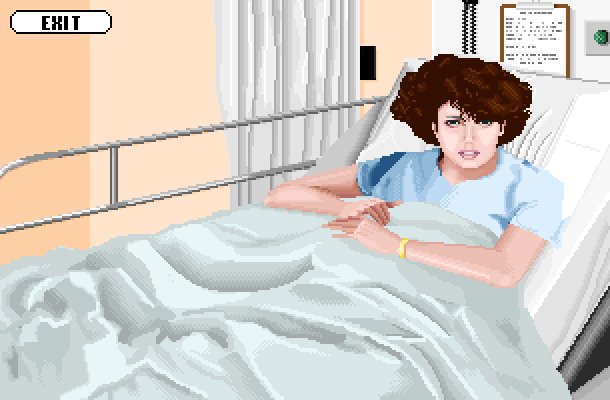
For Patient 2, I wasn't going to make that mistake. She was a 24-year-old woman, brought to the emergency room unable to use her right hand. According to paramedics, she'd been found on the floor, unable to move. I immediately ordered an MRI scan, a CAT scan, a skull X-Ray and an Angiogram, which confirmed two things: that the hospital had all of those machines, and she was probably human as she claimed. Probably. After my last bollocking, I wasn't prepared to rule anything out at this stage.
As well as the incredibly expensive scans that the patient or their next of kin probably wouldn't be too happy about paying for, I figured some direct tests were in order. You can focus your attention on three parts of the body—four if you don't mind being sued for malpractice. In this case, the patient claimed trouble in her right arm, so I opted to start with her legs. Skull instinct again. You get two tests here—a hammer and a pin. Whacking the patient on either knee made it pop up as expected. Repeatedly whacking them both while humming the Can-Can proved much funnier. At least, I thought so.
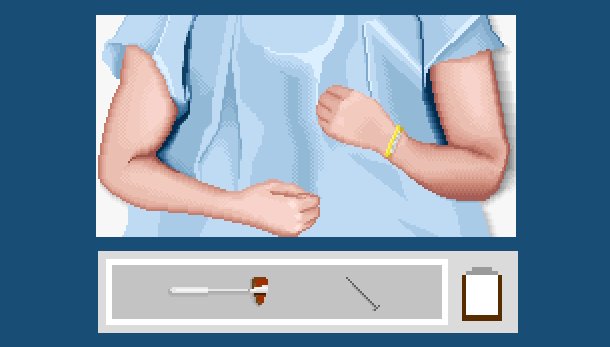
Moving up a bit, I had her squeeze her hands and tried the hammer out there too. Both arms responded immediately. A quick test with the pin seemed to show full responsiveness. Hmm. Her strength seemed fine too, though the right arm was a little weaker than the left. Curiouser and curiouser.
That only left the face. Here, I had a card that said "Say Alice". Showing it to her, she said "Alice." Impressive. Probably not a Media Studies student, I wrote in my notebook. Next, I used a black thingy—pardon the technical language—to check her eye movements, which looked fine, and a torch to check pupil dilation. Unfortunately, while fun, I couldn't say that any of these symptoms had really given me much insight into her condition. Then I had a flash of inspired genius. Sure, it was an unorthodox test, possibly even a maverick one, but a good doctor has to try everything to get to the—
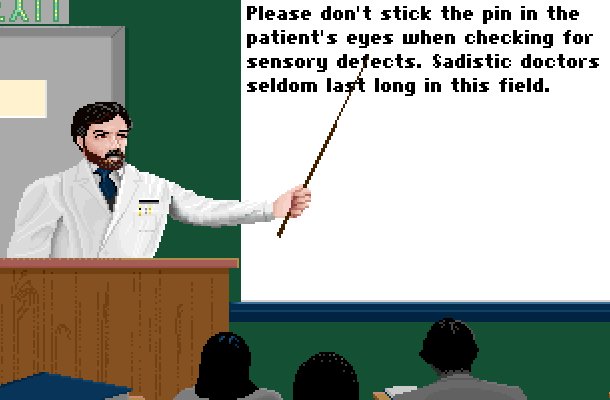
"Dr. Richard, you have a patient in Room 2," crackled the tannoy as I slouched dejectedly out of the room. It was nice of them to keep giving me patients after what had already been referred to as my "Freddy Krueger impression", but I just wasn't in the mood to kill anyone else just yet.
Instead, I decided to head back to my office to be alone with my thoughts for a while.

I ignored the plant. Plants can't talk. It's not like they're microwaves. Instead of dealing with that, I went to my desk to brush up on my neurology via a handy textbook, but almost immediately zoned out.
Instead, I opened up the staff profile file to decide who I wanted to have my back when I finally got into the operating room. There are six assistants from various disciplines, and you get to pick two. Norah Griffin for instance is a Surgical Intern with a speciality in Neurosurgery, while Jim Slade is a Physician's Assistant with a hilarious name. None of their pictures inspired much confidence.
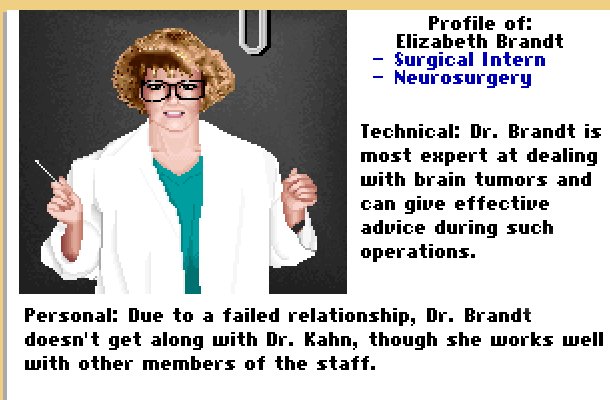
Flicking through their files, it quickly became obvious why this hospital kept giving me patients. Everyone else was just as screwed up. "Dr. Schmidt's relationship with Dr. Griffin's ex-husband has generated a great deal of enmity between the two," reads one file. "Due to a failed relationship, Dr. Brandt doesn't get along with Dr. Kahn," says another. As for Big Jim Slade? "Slade seems to have no trouble working with any of the staff, though he does have an attitude problem towards women."
I assigned Dr. Brandt and Dr. Kahn in the hope that I might be able to bring them together through surgery, either via shared accomplishment, or as some kind of Human Centipede. Call me a romantic at heart. That done, I turned back to the computer and things turned a little... strange. And bear in mind, we're talking strange for an office with a certificate on the wall that reads "This Space Available. Call (818) 885-0256 And Ask For Heidi." Enter ELIZA, the digital therapist...
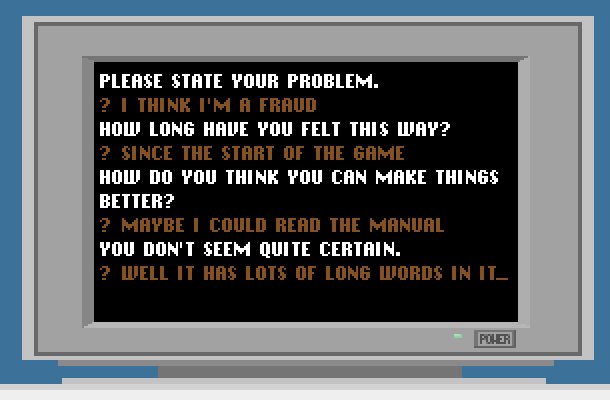
Spirits slightly raised, I went over to Room 2 for my next patient. 25-year-old man, brought to the emergency room unable to use his right hand. According to paramedics, they found him on the floor, unable to move. Once again, I hit him with a barrage of tests, which again suggested he was not one of the Reptilian Overlords plotting to overthrow us. Just in case though, I put the pin away in the interests of interplanetary diplomacy and pondered my options. Aspirin? Codeine? A psychiatrist?
In the absence of any solid ideas, I opted for brain surgery instead, partly on the grounds that it'd be easier to see anything wrong with his head open and just yoink the bad bits out on the fly, but mostly to know whether I was missing a trick by using the phrase "It's not like rocket science" to describe things. Of course, even after testing this, I'd have to build a rocket to be absolutely sure.
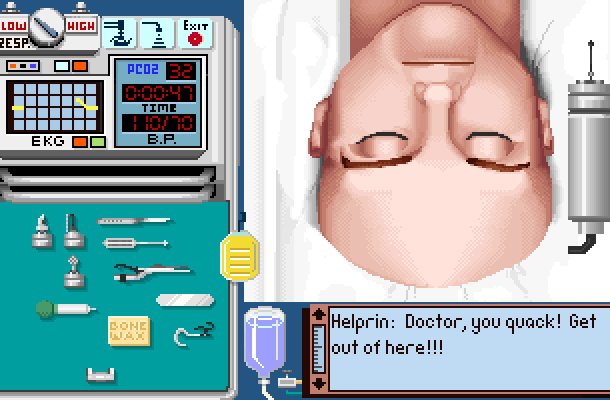
Apparently brain surgery is complicated, and patients don't like it when you make them shave their heads bald and then decide they'd probably have been OK with the aspirin after all. There are three trays worth of tools, not to mention an IV drip, an EKG to keep track of, assorted needles, and... oh... so much blood and potential for blood. Here are just a few of the tools you have to master:
Fish Hooks - Anchors the skin flaps away from the skull
Electrocauterizer - Used to cauterize bleeders
Trephine Drill - Drills the burr holes in the skull
Bone Saw Bit - Saw between the skull burr holes.
Staple Gun - Apply skin clips at the operation closing
Bone Wax - Stops small bleeders on the bone's edges
Soap - Is soap
Soap seemed safe enough, so I washed my hands and pulled on some gloves. Next to them was a big jug of antiseptic, which I tried to put onto the patient's head, but was quickly told should be saved until I'd actually turned it. I turned it and tried again. While I couldn't actually see Dr. Kahn, I took the lack of further bitching as a thumbs up. For that save, he would have the honour of being in front.
Soaking the patient in antiseptic, just to be on the safe side, I laid down some kind of blue covering, and reached for my scalpel. This seemed easy enough. Just draw down a dotted line and—
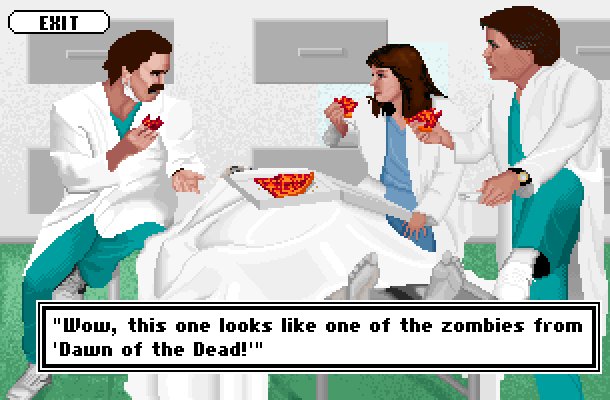
OH COME ON! Now, I may be the worst doctor in the entire world (the head neurologist's computer describes me, specifically, as "a real bozo. I think he's killed more people than the black plague and Jack the Ripper combined"), but even I'm calling bullshit on doctors eating pizza off my latest victim patient's slowly cooling corpse. Unhygienic, and rude. Where's my slice?
That's not the only thing that seems off about this hospital, mind. Everywhere you look, you'll see something odd. Why is there a man in the staffroom who stands around pouring hot coffee all over his hand? Why do none of my assistants seem to know what a woman is, describing all my patients as 'him'? Above all else, why is Kim Jong-Il working on the reception desk?
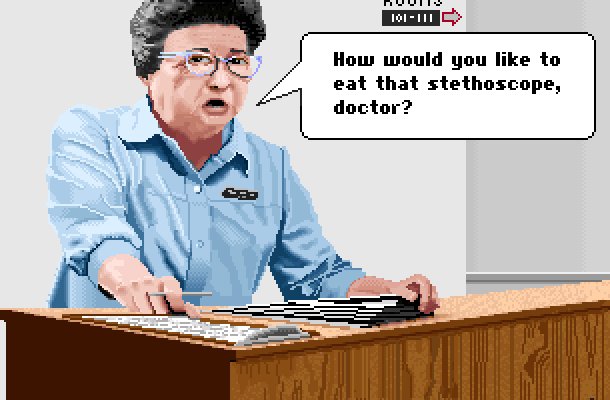
At this point, melancholy set in. Dr. Beardy hated me, and was never likely to become my mentor, yet nothing I did seemed to matter. Sending people off with a packet of aspirin hardly felt like saving their lives, but at least they wouldn't die on my watch. So far, I'd practically earned my own wing of the morgue, and the doctors eating pizza were now so fat they had smaller doctors trapped in their orbit. I was a failure as a doctor, and short of actually reading the manual instead of just doing shit at random to see if it worked, I couldn't see any way out of that. I even took to outright murdering patients, just to see if I'd finally get struck off, but simply poking my head through the door to send them to the OR and immediately injecting lidocaine into their eyeballs was only ever treated as a minor setback. Every time, I'd be forced back to class for five seconds, then everything was hunky-dory.
Finally, I stopped seeing patients at all. There was no point. Sure, they'd die without treatment, but what could I do? Only actively avoid poking them in the eye with a pin. Instead, I retreated to my office in the hope of rekindling the one true connection I felt I'd made during my medical career.
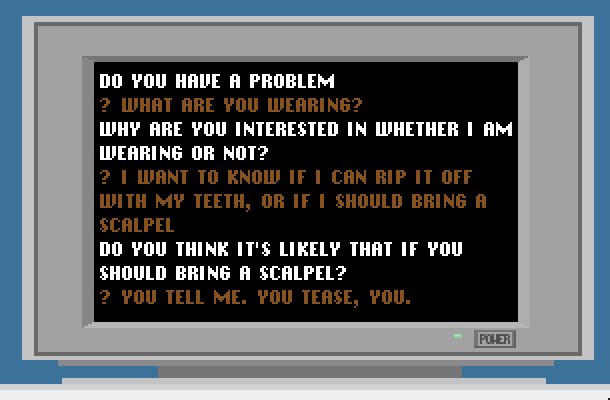
Then I glanced at my last syringe of lidocaine, and carefully injected it into my eye. Seemed like a fitting end to the killing spree, and definitely more fun than playing the Grey's Anatomy game.
In retrospect, maybe I should have read the manual after all.
Nah.

